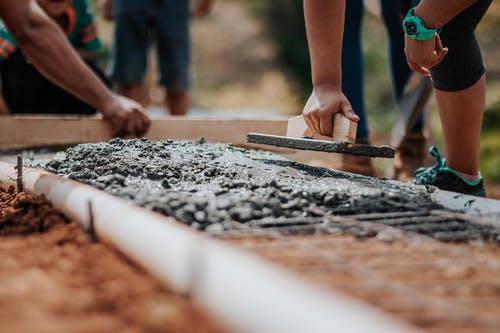Construction of the building’s structure will be done first, followed by the completion of the basic electrical and plumbing work by a specialty contractor. This procedure includes the installation of pipes and cables in the locations where they are necessary. Even though their job will not be completed at this time, it will aid in laying the basis for the subsequent installation of drywall, insulation, and ceilings in the building.
In most cases, roofers are brought in to finish the roof of a building at around the same time as rough electrical and plumbing work on the structure has been done. To prevent rain and other external variables from affecting the work that will be carried out in the next phases, this work must be finished before any more work within the building may be done. Contractors will also be brought in around this time to finish the exterior of the structure, which will help to further protect the interior work that is about to commence in the building. The exterior of the structure will be finished at the same time as the inside work.

Assuring the suitability of heating and cooling systems – Once the building’s external walls and roof are in place, the heating and cooling requirements may be handled. All the vents, ducts, and heating and conditioning units have been completed.
Finishing the interior work – After the heating and cooling work is completed, the interior can be considered finished. This involves the installation of insulation, drywall and ceilings. During this stage, an electrician is frequently called in to complete the installation of outlets and lighting fixtures. Learn more about building and construction at laundry solutions
Fixtures for installation – Once the internal walls have been constructed, all the fixtures for a space may be installed. Toilets, cupboards, windows, doors, and elevators are examples of items that fall within this category. Finally, finishing touches are applied to a building at its last stage of development. This includes tasks such as laying down flooring, painting the walls, installing worktops, and installing or replacing faucets in the bathrooms. You will be left with a lovely structure once the construction process and this step have been completed.

Conclusion
Building a house is a large-scale and long-term investment that requires careful planning. As a result, the real estate industry is one of the most significant investments in history. As obvious as it may seem, when the population of a certain area continues to grow, the demand for housing will continue to rise as well. As a result, it is critical to ensure that there is an adequate supply of housing facilities to match this demand. This tutorial has offered an understanding of the processes involved in developing a structure. Whether it’s a house, an office, a business, an event, and tourist centre, or a retail mall, most structures go through the construction stages described in this article.





